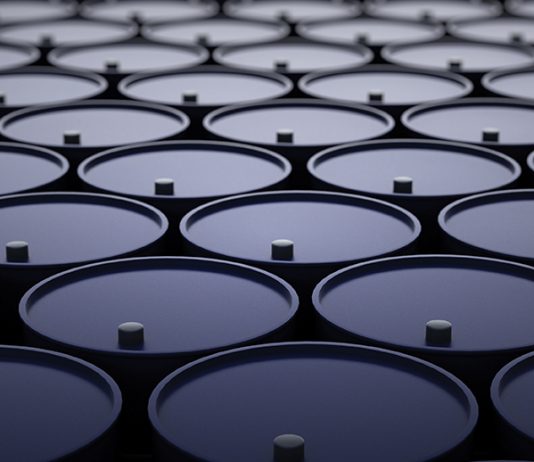
The oil and gas industry has faced significant volatility over the past few years, including the unprecedented destruction in demand from Covid-19, the rise in ESG driven investment, and increased geopolitical risk. In addition to formulating a profitable drilling strategy in such an environment, how can North American unconventional producers improve cash flow from base production using proven, economical strategies? Field data from turnkey patent-pending chemical processes from Kairos Energy Services applied without mechanical intervention in various shale basins have shown promise in quickly enhancing production and remediating damage through a low-cost, low-risk solution.
Background
Global hydrocarbon markets have changed drastically over the past decade, with more than 90,000 horizontal wells drilled in major U.S. unconventional oil and gas plays. Technological advancements and supply chain improvements resulted in longer laterals and larger completions at lower unit costs. Yet the rapid growth in drilling and production resulted in an investor capital loss of a half-trillion dollars between 2015 to 2019, according to Business Insider. The onset of the Covid-19 pandemic and subsequent crash in hydrocarbon demand only further extended investor losses. Current demand is approaching pre-pandemic levels, but Russia’s horrific attacks in Ukraine have resulted in a spike in commodity prices and injected significant uncertainty into the market.
The North American shale industry is responding to calls for increased production with moderate rig count increase but the lack of investor capital, continued demand for disciplined growth, and ongoing inventory concerns will likely not result in the rapid production rates experienced in the past. KES is focused on improving and extending the life of unconventional base production. Combined with a disciplined drilling program, base production optimization can add appreciable hydrocarbon production and improve cash flow. Further, maximizing production from existing assets will enhance an operator’s overall environmental, social, and governance (ESG) profile.
Turnkey Chemical Processes for Existing Unconventional Wells
KES has developed a patent-pending chemical process that combines specialty chemistry and a diversion package that can be applied without mechanical intervention that typically requires two to three days of downtime. The chemistry package is customized to each application and is designed to improve hydrocarbon relative permeability, remove water block, increase fracture conductivity, and target specific damages. The use of the engineered diversion package has shown the ability to distribute the injected fluids along one-to-two-mile laterals, preventing the bulk of the fluid from exiting the most conductive fracture clusters.
The KES process addresses four broad well candidates: production enhancement, frac hit remediation, enhanced prefills, and specific damage remediation. The description and criteria for each candidate type is outlined in Table 1.
 Table 1. Candidate types and selection criteria
Table 1. Candidate types and selection criteria
Addressing the Child – Parent Interactions Challenge
As the development of unconventional assets continue to mature, operators are forced to infill drill, risking potential interactions between the new well (child) and existing well (parent). The optimal spacing between wells, which prevents frac hits but does not leave behind an unstimulated reservoir, has been of intense interest in the industry. Nevertheless, frac hits are a common occurrence, and one analysis produced by Grant Miller estimates that, on average, 33% of frac hit results in negative production and reserve loss at the parent well.
The Eagle Ford formation located in South Texas has a particularly poor track record where approximately 41% of frac hits result in negative effects, according to a report by G. Lindsay. An internal study of six Eagle Ford wells that experienced negative frac hits showed a loss of 9% cumulative oil and 32% cumulative gas six months post-frac hit. The sustained damages to parent wells are primarily attributed to the large influx of water into depleted pore spaces and fractures, resulting in increased capillary pressure and water saturation, inhibiting hydrocarbon production.


A candidate well in the oil window of the Eagle Ford took a frac hit in December 2019, resulting in a 75% reduction in EUR. KES conducted a thorough candidate evaluation assessing well integrity, remaining reserves, current reservoir pressure, and a laboratory evaluation to assess compatibility and performance. A proprietary chemical package composed of a surfactant and nanoparticle blend, solvent, and synthetic acid was designed to address water block, organic deposition, and minor scale damage. A total of 10,000 bbl was injected over 10 stages with the diversion package being deployed between each stage and the well was shut-in for 48 hours post-treatment. The treatment increased oil production by 60%, resulting in a 30% improvement in the barrel of oil equivalent (BOE) EUR and paying back in just under four months (Figure 1).
This strategy can also be applied to protect parent wells from taking a frac hit. Known as a preload or frac protect, the typical method is bullheading water into the parent well to increase the pore pressure surrounding the existing fractures to reduce the risk of fracture growth from the child well. KES has executed multiple enhanced prefills in the Eagle Ford, which utilizes a unique volumetric design combined with the diversion package to improve fluid distribution, increase bottomhole pressure build, reduce the pressure falloff rate, and enhance production. Figure 2 shows the percent change in injectivity (rate/pressure) versus prefill volume for three enhanced prefills (orange dots) and typical bullheaded prefills (blue dots). The enhanced prefill approach built 137% more pressure per barrel injected than the typical bullhead prefills. Incremental production impacts are still being evaluated.
Solving the Gummy Bear Mystery
A recently fractured horizontal well in the Powder River Basin produced sporadically before a black gel-like substance blocked off the pump, reducing all productivity. It was determined the substance was the friction reducer which had been crosslinked by iron from the formation, also known colloquially as “gummy bears.” The operator had attempted multiple high concentration, low volume citric acid treatments to attempt to remediate the gummy bears with limited success (Figure 3).
KES received a sample of the gummy bear and a total of 40 different chemical packages were run, focusing on economically dispersing the gummy bear, preventing iron precipitation, and utilizing a non-oxidizing friction reducer breaker to minimize any risk of re-crosslinking. In addition, a surfactant-nanoparticle product was qualified for its ability to help disperse the gummy bear and to improve hydrocarbon relative permeability. Traditionally highly concentrated citric acid has been injected for gummy bear remediation, but due to the high cost of citric, only small volumes can be justified. This formulation allows for the injection of highly diluted chemistry, allowing for larger volumes.
The candidate well had a total perforated interval of 7,760’ and injected 4.2 MMlbs of proppant during the completion. A total of 2,700 bbl, targeting both the wellbore and propped fractures, were injected over eight stages with the biodegradable diverter being dropped between each stage. The well was returned to production and has been sustaining an oil production rate of 350 to 400 bopd over the past six months (Figure 3).

Enhancing Your ESG Profile
Fulfilling ESG standards is a strict maxim for any operator and the focus on sustainable practices has never been higher. Production enhancement and other base production optimization techniques are inherently a lower carbon footprint operation than new drilling operations and should be an important part of the oil and gas industry’s ESG goals. These approaches will not completely replace new drilling but can provide significant incremental production at a low hydrocarbon unit cost delivering significant value to shareholders. Finally, KES has dedicated significant resources to improving our chemistry’s ESG profile including use of and research into plant-based solvents, biologically based surfactants, and biodegradable diversion.
As demonstrated in the Eagle Ford trials, the four applications from Kairos Energy Services offer the opportunity to significantly improve production and restore well strength economically and effectively while also meeting growing ESG standards. Since its first application in the Eagle Ford, the operators have commercially scaled the processes to additional wells. Trials are also in progress at the Bakken, Powder River, Denver-Julesberg Basins, and Woodford/Arkoma.

About the author: Michael Lantz is the co-founder of Kairos Energy Services and a V.P. of Technical Applications at Finoric, LLC. He has over 13 years of experience in maximizing hydrocarbon recovery from conventional and unconventional reservoirs. This includes the design and application of enhanced oil recovery technologies, stimulation fluids, oilfield chemistry, and remedial processes. He holds a BSc in Chemical Engineering from the Colorado School of Mines and a MSc in Energy Management from the University of Colorado. Michael can be contacted at [email protected].
















